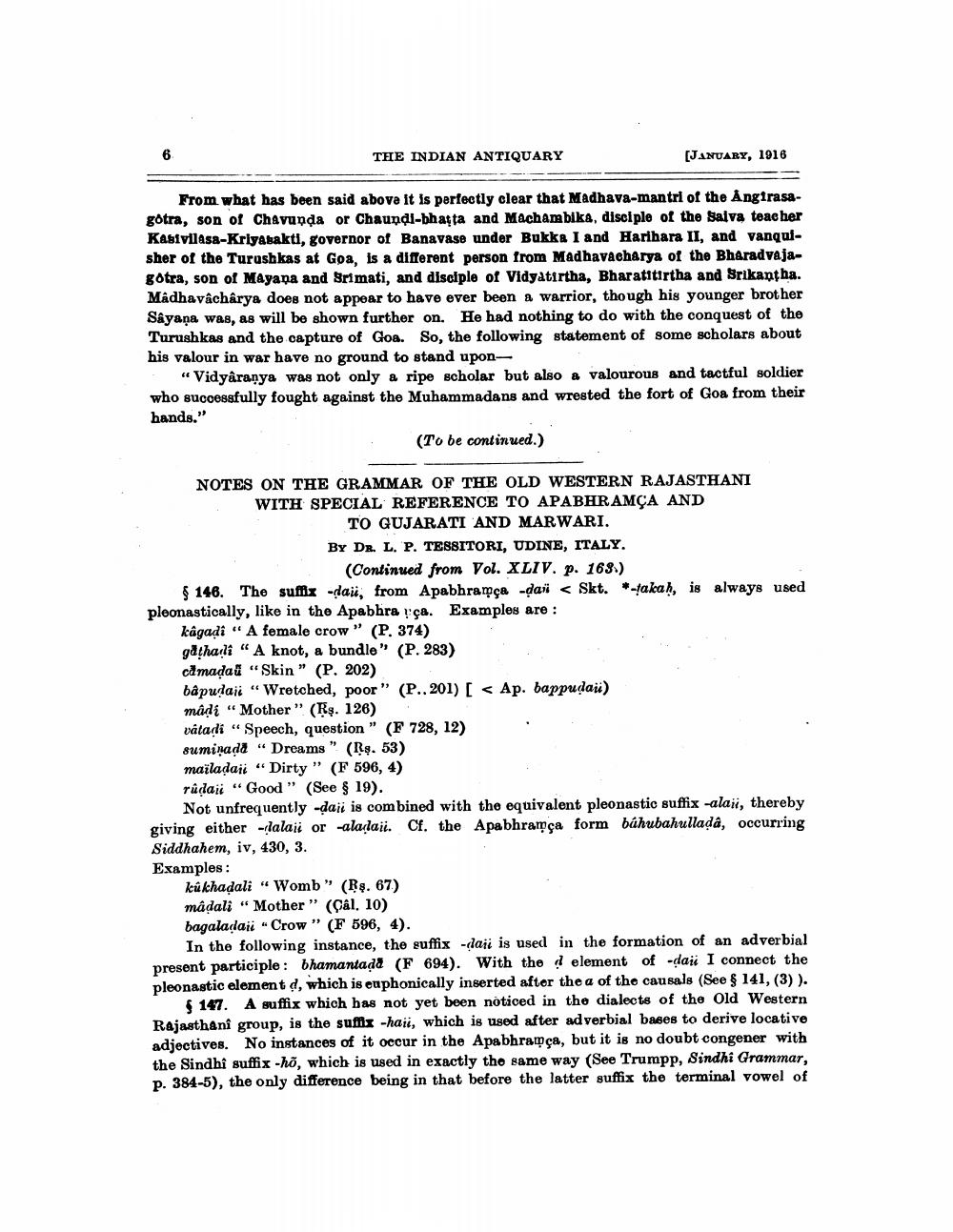________________
6
THE INDIAN ANTIQUARY
[JANUARY, 1916
From what has been said above it is perfectly clear that Madhava-mantri of the Angirasagotra, son of Chavunda or Chaundi-bhatta and Machambika, disciple of the Saiva teacher Kasivilasa-Kriyasakti, governor of Banavase under Bukka I and Harihara II, and vanquisher of the Turushkas at Goa, is a different person from Madhavacharya of the Bharadvajagotra, son of Mayana and Srimati, and disciple of Vidyatirtha, Bharatitirtha and Srikantha. Madhavâcharya does not appear to have ever been a warrior, though his younger brother Sâyana was, as will be shown further on. He had nothing to do with the conquest of the Turushkas and the capture of Goa. So, the following statement of some scholars about his valour in war have no ground to stand upon
"Vidyaranya was not only a ripe scholar but also a valourous and tactful soldier who successfully fought against the Muhammadans and wrested the fort of Goa from their hands."
(To be continued.)
NOTES ON THE GRAMMAR OF THE OLD WESTERN RAJASTHANI WITH SPECIAL REFERENCE TO APABHRAMÇA AND
TO GUJARATI AND MARWARI. BY DR. L. P. TESSITORI, UDINE, ITALY. (Continued from Vol. XLIV. p. 163.)
§ 146. The suffix -dau, from Apabhramça -da pleonastically, like in the Apabhra ça. Examples are:
kâgadi "A female crow" (P. 374)
gathali "A knot, a bundle" (P. 283)
Skt. *-takaḥ, is always used
camaḍau "Skin" (P. 202)
bâpuḍai "Wretched, poor" (P.. 201) [< Ap. bappuḍai)
madi "Mother" (Rs. 126)
vatadi "Speech, question" (F 728, 12)
suminada "Dreams" (Rs. 53)
mailaḍaii "Dirty" (F 596, 4)
ruda "Good" (See § 19).
Not unfrequently -dai is combined with the equivalent pleonastic suffix -alai, thereby giving either lalaii or alaḍaii. Cf. the Apabhramça form báhubahullaḍâ, occurring Siddhahem, iv, 430, 3.
Examples:
kukhaḍali "Womb" (Rs. 67)
mâdali "Mother" (Çâl. 10) bagalaḍaii "Crow" (F 596, 4).
In the following instance, the suffix daii is used in the formation of an adverbial present participle: bhamantada (F 694). With the element of dai I connect the pleonastic element d, which is euphonically inserted after the a of the causals (See § 141, (3)).
§ 147. A suffix which has not yet been noticed in the dialects of the Old Western Rajasthani group, is the suffix -haii, which is used after adverbial bases to derive locative adjectives. No instances of it occur in the Apabhramça, but it is no doubt congener with the Sindhi suffix -ho, which is used in exactly the same way (See Trumpp, Sindhi Grammar, p. 384-5), the only difference being in that before the latter suffix the terminal vowel of




